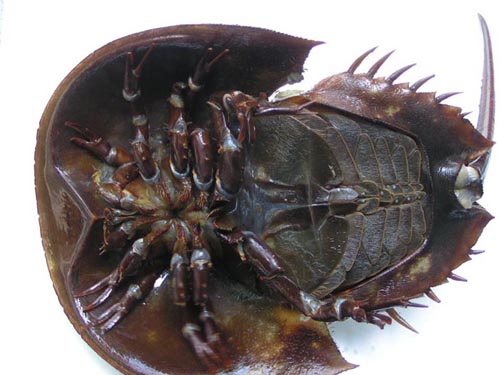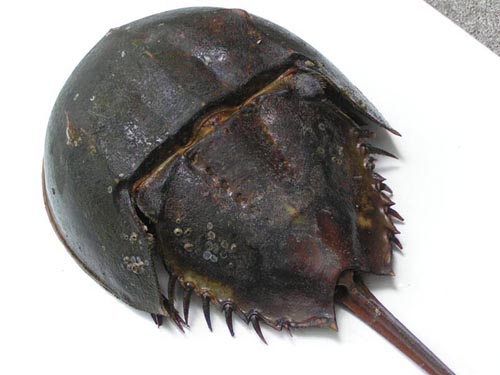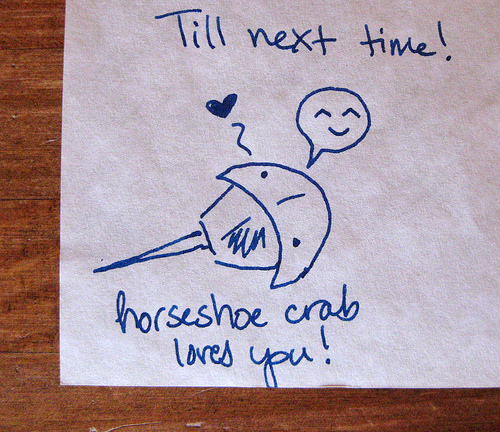Part 43: Real-life worth match for the final GUILT
toanoradian posted:
Wait, so these 'sinners' is where the GUILT is tested, yes? As such, the 'original' version? The final products from these is then spread all over the world, which inflict the other people we've treated so far. Did I get that right?
So why is the GUILT inside these Sinners stronger than the ones we've faced? Nobody done any further research for them, is the Kyriaki naturally evolving to be harder? Is it because the Kyriaki is just so used to its current environment?
I know it's gameplay-story separation, I just don't want to discuss Delphi testing on children
And here is the overdue critter writeup for your preusal:
Stranger than fiction: Savato, Mother of GUILTs
While even World has trouble coming up with a real world analogue of everyone's favourite heart spider, it is quite easy to come up with real life spiders that are equally terrifying - GBS has some fine examples handy. The relatives of spiders are even nastier. Ticks, which are in the same class as spiders, are vectors for diseases such as Lyme disease and Rocky Mountain spotted fever.
While those are interesting in and of themselves, Savato is the last and the strongest of them all, and deserves a worthy match in terms of awesomeness and medical importance.
Ladies and gentlemen, may I present -


Sorry, it's on the wrong side and I have got the wrong smilie. Let me flip it over:




(Image source)
The horseshoe crabs (order xiphosura) are distant cousins of spiders, scorpions and the aforementioned ticks who live in shallow seas. One can say they are the nobles of the arthropods: their ancestors lived alongside such dignitaries as trilobites and dinosaurs, yet managed to outlive them both while remaining virtually unchanged. They are literal bluebloods as well; since they are not mammals, they don't have hemoglobin in their blood to carry oxygen around. Instead they use hemocyanin for the job, which makes their blood blue. And it is the blue blood that makes horseshoe crabs truly noble animals.
To explain why horseshoe crab's blood is so useful, we have to switch to the “antagonist” of this tale – endotoxins.
After bacteria are discovered to be responsible for diseases, people assumed that injections are safe as long as the pathogens are killed beforehand. However, doctors soon discover that patients receiving vaccines, which consisted of dead bacteria, sometimes develop fevers with no apparent cause. Scientists soon discovered that it is caused by some material from the bacteria; they then assumed that bacteria are jerks who keep toxins inside, only releasing them when the bacteria are killed and broken down. These toxins are named “endotoxin”, to differentiate from “exotoxins”, or toxins actively released by bacteria.*
Now the pharmaceutical industry has a problem. To make injected medication safe, it is no longer enough to kill the bacteria only – the material itself must be free from bacterial contamination as well.** Therefore, a test is needed to detect bacterial contamination such that manufacturers can discard any contaminated samples. This is where the horseshoe crab comes in.
As a marine inhabitant, horseshoe crabs are constantly in danger of infection from any of the innumerable bacteria in sea water. However, being non-mammals, they have no immune system which, despite what this game may lead you to believe, is very useful for fighting off all those non space bug infections. So how does horseshoe crab deal with bacteria? The secret lies with their blood cells called amebocytes. Each amebocyte contains a mix of compound that, upon contact with an endotoxin, binds with it and form a clot, trapping any bacteria within and stopping further bacterial entry.
In the 1960s, American researchers Dr. Frederick Bang and Dr. Jack Levin discovered and isolated that mixture. As it is obtained by lysing the amebocytes (ie. bursting cells by placing them in distilled water) of Limulus polyphemus (scientific name of North American horseshoe crab), it is named Limulus amebocyte lysate, or LAL for short.
As LAL test is cheap, fast and sensitive, it quickly becomes the standard method for detecting bacterial contamination. At 2008, a quart of horseshoe crab blood fetched about US$15,000, and the US$50 million industry is sustained by the blood of about 250,000 horseshoe crabs. These spider-kins are caught by trawlers and transported to the LAL laboratories to be cleaned, and the uninjured ones are bled with a large-guage needle. Up to 30% of the blood may be removed in a bleeding.
There have been arguments on how much the industry affects the horseshoe crab population, but they are definitely nice critters to be kept around. The next time you see an upside-down horseshoe crab on a beach, please flip and return it to the sea. Remember:

Image source
* Endotoxins are actually a class of chemicals called lipopolysaccharide (LPS). LPS is a component of the outer membrane of Gram-negative bacteria and do important stuff such as keeping the bacteria in one piece. However, the immune system react to them violently, resulting in symptoms such as fever.
** You may wonder why they do not remove the endotoxins instead. Unfortunately, being merely bacteria bits, endotoxins can neither be destroyed by steam sterilization nor be filtered out.